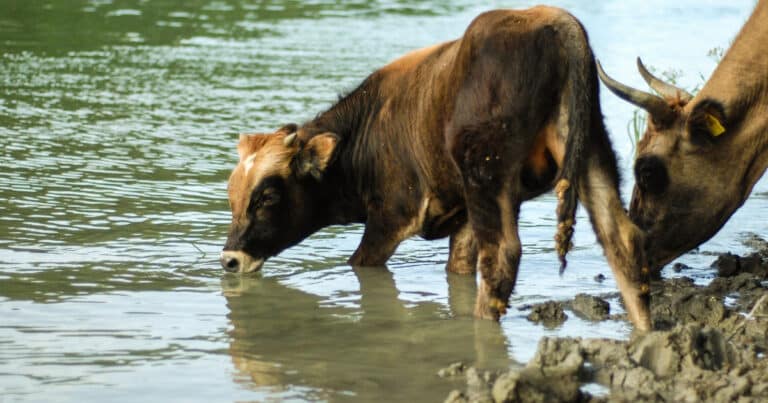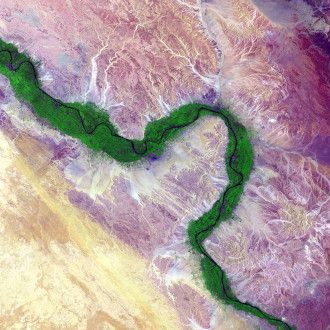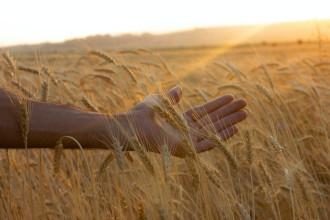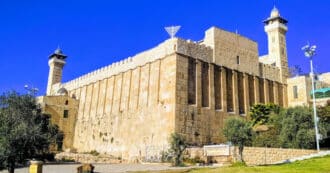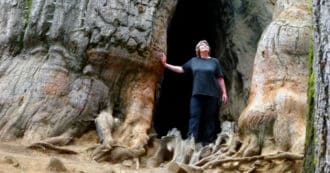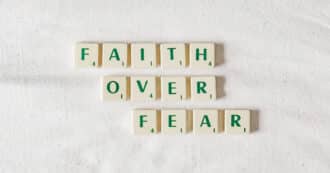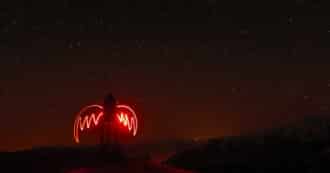Summary of Genesis 41
By Aryeh Ronay – In Genesis 41, we read about Pharaoh, king of Egypt and his mysterious dreams. In one dream he sees seven cows that are fat and healthy swallowed by seven cows that are “ugly and gaunt” (Genesis 41:4)
In another dream he sees seven heads of grain that are healthy and full, that are swallowed by seven thin heads of grain that are “blighted by the east wind” (ibid 41:6)
Pharaoh calls all the Egyptian wise men to interpret his dream, but no one is able to.
However, the chief cup-bearer tells Pharaoh that when he was a prisoner in the house of the captain of the guard, he and the chief baker had dreams that a “young Hebrew” (ibid 41:12) was able to interpret.
Pharaoh calls for this young Hebrew, who happens to be our hero, Joseph.
Joseph interprets Pharaoh’s dream as meaning that there will be seven years of plenty followed by seven years of famine and someone should be appointed to manage the food in the land of Egypt in preparation for the famine years.
Joseph: From Prisoner to Ruler
It is here that we witness one of the most transformative moments in the Bible as Joseph goes from prisoner in the land of Egypt, to second-in-command: “Pharaoh said to his servants ‘Can we find such a one as this is, a man in whom the Spirit of God is?’
And Pharaoh said to Joseph, ‘Forasmuch as God hath shewed thee all this, there is none so discreet and wise as thou art'” (ibid 41:38-39)
In rapid succession, Pharaoh put a golden chain on Joseph’s neck, Pharaoh called Joseph’s name “Zaphnath-Paaneah” so he would have an Egyptian name and Pharaoh gave Jacob, Asenath, the daughter of Potiphera, priest of On, as a wife.
The years of plenty arrive along with the years of famine, just as Joseph predicted.
The famine spreads and people come from the land of Egypt and from distant lands to buy food from Joseph. What can we learn when we look deeper into this chapter of the Bible?
Eco Bible
The Song of the Land by Rabbi Shaul David Judelman
Genesis 41:4 – and the Ugly Gaunt Cows Ate Up the Seven Handsome Sturdy Cows. And Pharaoh Awoke.
The environmental movement that has sprung forth from the West bears many imprints of the thought paradigms that have led to the environmental crisis itself. There is a tendency to rush toward results and overlook the process required to organically arrive at those results. Part of our work in healing is to redress these internalized ways of thinking to arrive at a truly sustainable way of living. Through the Torah, we are learning this lesson of process.
In Pharaoh’s prophetic dream seven robust cows are devoured by seven frail ones (Genesis 41:2-4). The signs seem clear for all to see: seven good and seven so bad that they devour the good that was. It is a vision that may foretell of our human endeavors with technology: a golden age of Enlightenment and invention, industrialization, and higher qualities of life, now quivering under the unknown threat of today’s environmental crisis.
Why weren’t the Egyptians able to understand the dream? Upon hearing Joseph’s interpretation, it seems fairly clear. Was it myopia? Was it denial? How do we, aware of the “dreams” (predictions) of our scientists, share the interpretation? For the last 30 years, environmentalists have been struggling with this challenge of “giving over the bad news.” With news that nobody wants to hear, how do they spread the message? And as their goal is not to share bad news, but rather to inspire, motivate, and guide necessary changes that society and individuals need to make, how do they achieve this?
The environmental movement faces this challenge to catalyze change in two distinct realms: action and spirit. In the realm of action, consumer patterns, industrial pollution, and carbon footprints are the terms of discourse and site of change. But from a broader perspective, those actions are the result of a deeper problem: an imbalance of spirit or exile. If our lifestyle is out of balance with the ecosystems we inhabit, is it fair to assume that our inner dimensions are also out of balance? And while we are seeing great advances and potential in addressing the action side of our crisis, are we paying enough attention to the inner dimensions of disconnect?
As green technologies increase in public awareness and economic reality, the actions seem easier to fix, while our personal and intimate awareness of our surroundings remains as disconnected as ever. How do we address this experiential exile from our Place? How do we share that a connection to our larger self is the true importance of a personal connection to one’s habitat, the seasons, the fruits and the land, and the living experience of connection to a place?
An answer is given later in the story of Joseph’s family coming down to Egypt. Joseph, the favorite son – who, years before, was left for dead by his jealous brothers – has come to power in Egypt and is in charge of dispensing the only food stores in the region. Jacob, his father, sends a “care package” down with his brothers to the ruler, gifting him with fruits of the Land of Israel.
Jacob does not point out the bad points of Egypt; rather he sends Joseph the fruits of the land. Rebbe Nachman writes that Jacob was sending this mysterious ruler of Egypt a taste of what the Land of Israel is. This is perhaps the true core of environmental work: to pass on the awareness of ourselves within our surroundings.
The taste and song of green living are our greatest allies in affecting substantial organic change in our patterns. For if we end up with an environmentally sustainable lifestyle, but don’t grow more aware of our surroundings and our personal connection to that which is outside of us, we may be missing one of the ultimate lessons that the environmental crisis can teach us.
Foreseeing Future Challenges
Genesis 41:8 – Next Morning, His Spirit Was Agitated, and He Sent for All the Magicians of Egypt, and All its Wise Men; and Pharaoh Told Them His Dreams, but None Could Interpret Them for Pharaoh.
Rabbi Michael Melchior teaches that the Egyptians could not interpret Pharaoh’s dream because they knew only abundance from the Nile. They could not imagine the Nile not flooding each year to provide water for their crops. Joseph, who experienced scarcity in Israel, was able to envision a famine in Egypt. Certainty and stability in the past can mislead us as we try to prepare for an uncertain future. For many people who have enjoyed material stability and abundance in the past half-century, it is difficult to imagine that the next half-century will be much different. One role of spiritual leadership is to see more deeply into where our current lifestyle is leading us, and to help us to change accordingly.
Cows and Crops
Genesis 41:20, 24 – and the Seven Lean and Ugly Cows Ate Up the First Seven Cows, the Sturdy Ones . . . and the Thin Ears Swallowed the Seven Healthy Ears. I Have Told My Magicians, but None Has an Explanation for Me.
Why did Pharaoh have two such similar dreams, and why did the dream about the cows precede the one about the crops? Rabbi Matis Weinberg explains: “The proximate failure of the earliest links in the food chain (ears of grain) would lead to the rapid destruction of their only stockpile (the cows) and the collapse of society.”
In 1891, a severe famine in Russia affected 13 million people. Along with the severe drop in crop yields, analysts assert, “the most serious effect of the famine was . . . the widespread destruction of livestock in the famine area . . . only a third of the horses remained alive and one-eighth of the cattle.”
Pharaoh has a nightmare about the economic impact of a famine on his empire. Since cattle consume valuable crops that can sustain humans, they cannot be fed during the famine. We see evidence of this later in the story when the Egyptians willingly exchange their cattle for grain.
Today, about one billion cattle are raised for beef and milk. This requires grain and water that could sustain tens of billions of people. A cow weighing 1,300 pounds (590 kg), making 100 pounds (45.5 kg) of milk per day, or producing 490 pounds of beef (222 kg) requires 40,000 kcal/day of feed. This is approximately 16 times a human’s daily food consumption. In addition, such a cow would drink 20 gallons of water, compared to an average of half a gallon by a person – a multiple of 40 times. In a world with a rapidly growing human population, and with increasing food and water scarcity, should we be rearing a billion grain and water guzzling cows?
In Pharaoh’s dream, the cows and grain are separate. In modern times, the cattle (as well as hogs and chickens) consume much of the agricultural crops grown by people. Indeed, “Livestock takes up nearly 80 percent of global agricultural land yet produces less than 20 percent of the world’s supply of calories.”
* Featured image source

